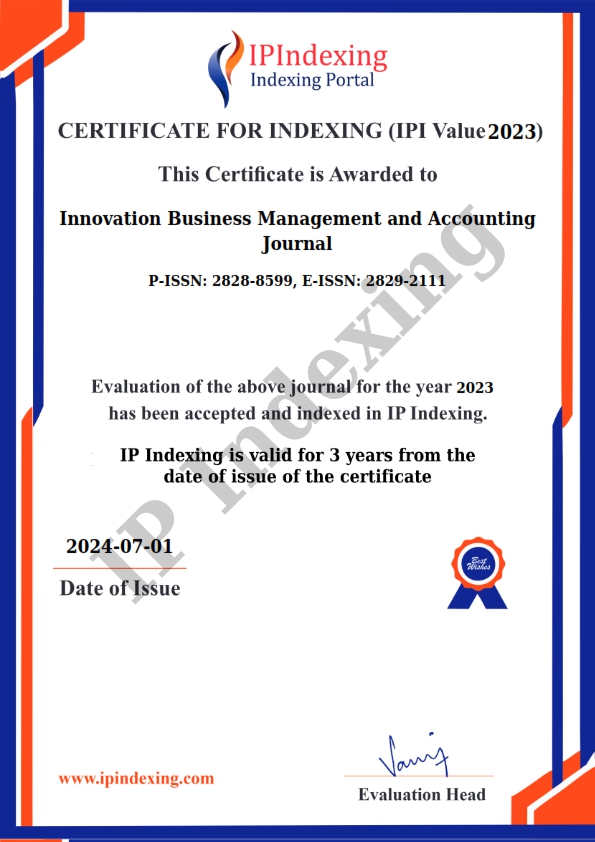Assessing the Contribution of Tourism to Economic Growth in Nepal
DOI:
https://doi.org/10.56070/ibmaj.2025.024Keywords:
Covid-19 Impact, Economic Development, Suitability, Tourism Growth, TransformationAbstract
This study examines the impact of tourism on Nepal’s economic growth using time-series data from 2001 to 2024. Employing linear and multiple regression analyses, results show a significant upward trend in tourist arrivals, increasing by approximately 1,493 visitors annually, and a corresponding rise in tourism’s contribution to GDP by 0.0184 percentage points per year. A strong positive correlation (r = 0.87) between tourist arrivals and GDP contribution underscores tourism’s key role in economic development. Despite a sharp decline in tourism during 2020 due to the COVID-19 pandemic, structural break analysis indicates a resilient recovery in subsequent years. Stationarity tests show that important variables were not stable, so we adjusted the data to make it suitable for accurate time-series modeling. Findings highlight the sustained and growing economic importance of tourism in Nepal and suggest avenues for future research incorporating advanced modeling techniques.
Downloads
References
Arslanturk, Y., Balcilar, M., & Ozdemir, Z. A. (2011). Time-varying linkages between tourism receipts and economic growth in a small open economy. Economic Modelling, 28(1–2), 664–671. https://doi.org/10.1016/j.econmod.2010.06.003
Balaguer, J., & Cantavella-Jorda, M. (2002). Tourism as a long-run economic growth factor: The Spanish case. Applied Economics, 34(7), 877–884. https://doi.org/10.1080/00036840110058923
Bhattarai, B., Shrestha, P. P., & Acharya, M. (2021). Tourism’s contribution to the economy: Challenges and opportunities in Nepal. Journal of Tourism and Hospitality Education, 11, 15–28. https://doi.org/10.3126/jthe.v11i0.37710
Bouzahzah, M., & Menyari, Y. (2013). International tourism and economic growth: The case of Morocco and Tunisia. The Journal of North African Studies, 18(4), 592–607. https://doi.org/10.1080/13629387.2013.836321
Brida, J. G., Cortes-Jimenez, I., & Pulina, M. (2014). Has the tourism-led growth hypothesis been validated? A literature review. Current Issues in Tourism, 19(5), 394–430. https://doi.org/10.1080/13683500.2013.868414
Cannonier, C., & Burke, M. G. (2018). The economic growth impact of tourism in small island developing states—Evidence from the Caribbean. Tourism Economics, 25(1), 85–108. https://doi.org/10.1177/1354816618792792
Diamond, J. (1977). Tourism's role in economic development: The case reexamined. Economic Development and Cultural Change, 25(3), 539–553. https://doi.org/10.1086/451015
Dogru, T., & Bulut, U. (2018). Is tourism an engine for economic recovery? Theory and empirical evidence. Tourism Management, 67, 425–434. https://doi.org/10.1016/j.tourman.2017.06.014
Dritsakis, N. (2004). Tourism as a long-run economic growth factor: An empirical investigation for Greece using causality analysis. Tourism Economics, 10(3), 305–316. https://doi.org/10.5367/0000000041895094
Durbarry, R. (2004). Tourism and economic growth: The case of Mauritius. Tourism Economics, 10(4), 389–401. https://doi.org/10.5367/0000000042430962
Fauzel, S., Seetanah, B., & Sannassee, R. V. (2016). Foreign direct investment, tourism development and economic growth: Evidence from Mauritius. Tourism Review, 71(1), 24–38. https://doi.org/10.1108/TR-05-2015-0018
Gautam, B. P. (2011). Tourism and economic growth in Nepal. NRB Economic Review, 23(2), 18–30.
Ghali, M. A. (1976). Tourism and economic growth: An empirical study. Economic Development and Cultural Change, 24(3), 527–538. https://doi.org/10.1086/450886
Gunduz, L., & Hatemi-J, A. (2006). Is the tourism-led growth hypothesis valid for Turkey? Applied Economics Letters, 12(8), 499–504. https://doi.org/10.1080/13504850500365823
Hye, Q. M. A., & Khan, R. E. A. (2012). Tourism-led growth hypothesis: A case study of Pakistan. Asia Pacific Journal of Tourism Research, 17(2), 191–202. https://doi.org/10.1080/10941665.2011.625430
Jimenez, N., & Ortuno, M. T. (2005). An input-output model applied to the impact of tourism on a regional economy. Applied Economics Letters, 12(7), 471–474. https://doi.org/10.1080/13504850500119678
Khadka, N. (1993). Tourism and economic development in Nepal. Asia Pacific Journal of Tourism Research, 1(1), 23–32.
Khalil, S., Kakar, K. M., & Waliullah. (2007). Role of tourism in economic growth: Empirical evidence from Pakistan economy. The Pakistan Development Review, 46(4), 985–995.
Khizindar, T. M. (2012). Effects of tourism on residents’ quality of life in Saudi Arabia: An empirical study. Journal of Hospitality Marketing & Management, 21(6), 617–626. https://doi.org/10.1080/19368623.2012.637168
Ministry of Culture, Tourism and Civil Aviation [MOCTCA]. (2016). Tourism statistics 2015. Government of Nepal.
Ministry of Culture, Tourism and Civil Aviation [MOCTCA]. (2021). Tourism statistics 2020. Government of Nepal. https://www.tourism.gov.np
Neuts, B. (2019). Tourism and economic development: Evidence from emerging markets. Tourism Economics, 25(6), 928–947. https://doi.org/10.1177/1354816618823099
Oh, C.-O. (2005). The contribution of tourism development to economic growth in the Korean economy. Tourism Management, 26(1), 39–44. https://doi.org/10.1016/j.tourman.2003.09.014
Pan, L., & Dossou, T. A. M. (2019). Tourism and economic growth in the Republic of Benin: Evidence from ARDL approach. Journal of Economics and Sustainable Development, 10(6), 30–39.
Pradhananga, R. B. (1993). Input-output analysis of tourism in Nepal. Economic Journal of Nepal, 16(3), 33–50.
Ridderstaat, J., Croes, R., & Nijkamp, P. (2014). Tourism and long-run economic growth in Aruba. International Journal of Tourism Research, 16(5), 472–487. https://doi.org/10.1002/jtr.1941
Salifou, S., & Haq, I. U. (2016). Tourism and economic growth in Africa: Evidence from a panel Granger causality analysis. South African Journal of Economic and Management Sciences, 19(4), 512–532. https://doi.org/10.4102/sajems.v19i4.1373
Sharma, C. P. (2001). Tourism and employment: A case study of Nepal. Economic Journal of Nepal, 24(4), 45–59.
Sharpley, R. (2009). Tourism development and the environment: Beyond sustainability? Earthscan.
Shrestha, M. B. (1998). Tourism in Nepal: Problems and prospects. The Economic Review, 10, 1–10.
Singh, A., Kim, H. J., & Feinstein, S. (2010). An empirical analysis of tourism export and economic growth in India. Tourism Economics, 16(4), 883–893.
Srinivasan, P., Kumar, K. N., & Ganesh, L. (2012). Tourism and economic growth in Sri Lanka: An ARDL bounds testing approach. Procedia - Economics and Finance, 2, 288–296. https://doi.org/10.1016/S2212-5671(12)00084-0
UNWTO. (2021). International tourism and COVID-19. United Nations World Tourism Organization. https://www.unwto.org
UNWTO. (2021b). International tourism highlights: 2021 edition. World Tourism Organization. https://www.e-unwto.org/doi/book/10.18111/9789284422456
Upadhyaya, R. P. (2004). A study of tourism as a leading sector for economic development in Nepal. The Economic Journal of Nepal, 27(1), 1–10.
WTTC. (2023). Economic impact report 2023: Nepal. World Travel & Tourism Council. https://wttc.org
Zhang, G. (2001). Tourism’s impact on economic development in China. Tourism Economics, 7(1), 47–52. https://doi.org/10.5367/000000001101297406
Zortuk, M. (2009). Economic impact of tourism on Turkey’s economy: Evidence from cointegration tests. International Research Journal of Finance and Economics, 25, 231–239.
Downloads
Published
How to Cite
Issue
Section
License
Copyright (c) 2025 Krishna Prasad Ojha, Madan Kandel, Kapil Shah

This work is licensed under a Creative Commons Attribution-ShareAlike 4.0 International License.



